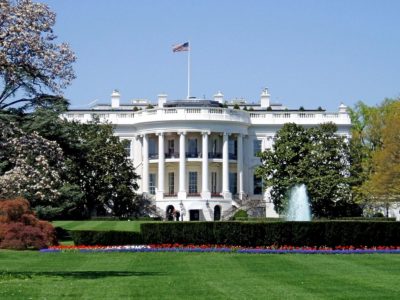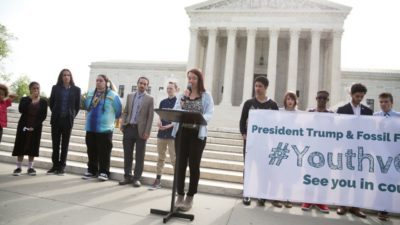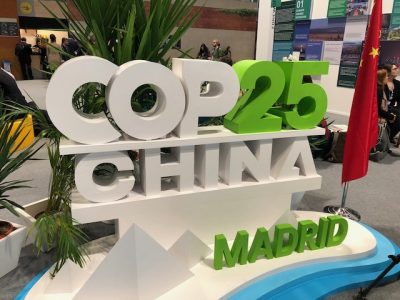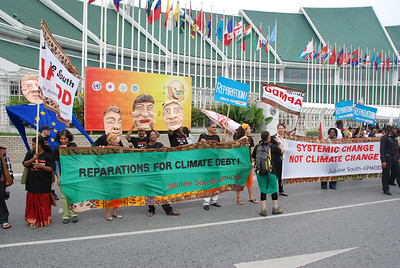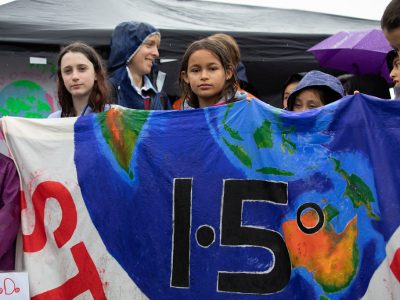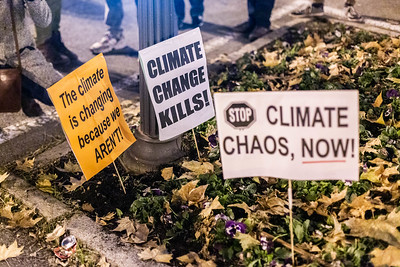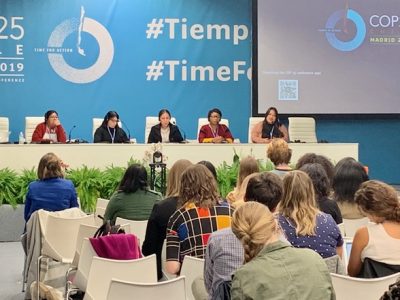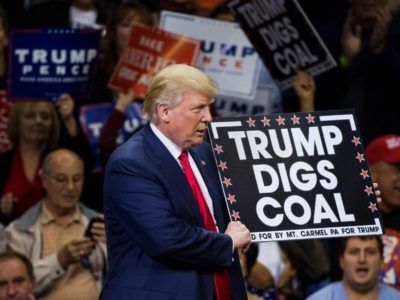Climate Change
Looking Ahead: Inauguration Day, 2021.
There are 3 plausible scenarios for the new balance of power.
Inauguration day is a year from today. What will the balance of power be then? The House doesn’t seem to be in play. Democrats have an uphill fight to win the Senate, so a GOP White House would probably mean a GOP Senate. That leaves three likely scenarios, with different implications for environmental law. Scenario …
Continue reading “Looking Ahead: Inauguration Day, 2021.”
CONTINUE READINGJuliana and the Future of Climate Litigation
Asking judges to pass judgment on all U.S. energy policy was a bridge too far.
The Ninth Circuit threw out the Juliana litigation this morning. The two judges in the majority basically said, legalistic language, that you can’t get the Green New Deal by court order. It was wrong for the Supreme Court to step in at the last minute to put the trial on hold, rather than giving the …
Continue reading “Juliana and the Future of Climate Litigation”
CONTINUE READINGA Paper Tiger?
Trump is proposing big changes to CEQ regs. But they may not matter.
The Trump Administration is trying to gut the current White House rules on environmental impact statements. Some people view this move as a death blow to an important environmental tool. Here’s what Trump is trying to do and why it may not matter as much as people fear. As to what Trump & Co. are …
Continue reading “A Paper Tiger?”
CONTINUE READINGWhither Climate Ambition
China can lead the way in 2020, but will it?
China, the world’s largest carbon emitter, has the opportunity to enhance global ambition on climate change action this coming year in the run-up to COP26 in Glasgow, Scotland. The question is whether it will do so. I attended COP25 in Madrid this month with colleagues and students on behalf of UCLA’s Emmett Institute on Climate Change and …
Continue reading “Whither Climate Ambition”
CONTINUE READINGGuest Blogger Divya Rao: Confronting Reality: A Lack of Accountability at COP25
The Support of Toyota and Other Manufacturers for the Trump Administration’s Policy Rollbacks Shows the Need to Confront Corporate Decisionmaking on Energy and Climate
As Cara Horowitz and Idalmis Vaquero discussed in their blog posts, the true highlight of COP 25 has been the numerous youth and indigenous interventions, actions, and disruptions. After spending four days at the COP, I came away from the events surprised by the level of corporate visibility and greenwashing in the side events, but …
Continue reading “Guest Blogger Divya Rao: Confronting Reality: A Lack of Accountability at COP25”
CONTINUE READINGCOP25 in Context, or “How Bad is It?”
Reflections on Stopping Speeding Locomotives and Falling Off Cliffs
In my last post, I sketched a few of the many intense tensions and contradictions swirling around this year’s Conference of the Parties (COP25) to the UN Framework Convention on Climate Change (FCCC). In this post, I’ll try to make some sense of the biggest tension of all, one that folks working on climate are …
Continue reading “COP25 in Context, or “How Bad is It?””
CONTINUE READINGDisorientation, Rage, Despair – and Hope? The Contradictions of COP25
Personal Notes on the Conference of the Parties in Madrid
As you’ve seen from several recent posts (and more to come), the UCLA Law Emmett Institute has had an observer delegation – as we do every few years – at the 25th annual Conference of the Parties (COP25) to the Framework Convention on Climate Change (FCCC). I’ve been there with faculty colleagues Cara Horowitz and …
Continue reading “Disorientation, Rage, Despair – and Hope? The Contradictions of COP25”
CONTINUE READINGGuest Blogger Tom Callahan: The Fallacy of Climate Choice
Promoting Positive Climate Choices at Every Level of Decision-making
One of the undercurrents of the negotiations at COP 25 in Madrid is the lack of leadership from the United States government after the decision to pull out of the Paris Agreement. While the formal decision-making process here only involves nations that are party to the agreement, there are numerous NGOs, business groups and other …
Continue reading “Guest Blogger Tom Callahan: The Fallacy of Climate Choice”
CONTINUE READINGGuest Blogger Idalmis Vaquero: Women of Color Leading Climate Justice at COP 25
Young Advocates Call For More Inclusive and Culturally Responsive Negotiations
Four years after the Paris Agreement was adopted by member countries of the United Nations Framework on Convention on Climate Change, countries are still working out the details on how they will reduce their carbon emissions. This year the Conference of the Parties (COP) 25 is taking place in Madrid, Spain under the leadership of …
Continue reading “Guest Blogger Idalmis Vaquero: Women of Color Leading Climate Justice at COP 25”
CONTINUE READINGCoal in 2019: A Tale of Decline
Like Canute & the ocean, Trump may wave his hands, but he can’t stop the tide.
Coal is just about the worst possible way of generating electricity in terms of its climate impacts. It’s also a serious public health hazard due to the particulates, sulfur dioxide, and nitrogen oxides it produces. Thus, reducing the use of coal is a high priority. How did we do in 2019? The short answer is …
Continue reading “Coal in 2019: A Tale of Decline”
CONTINUE READING



